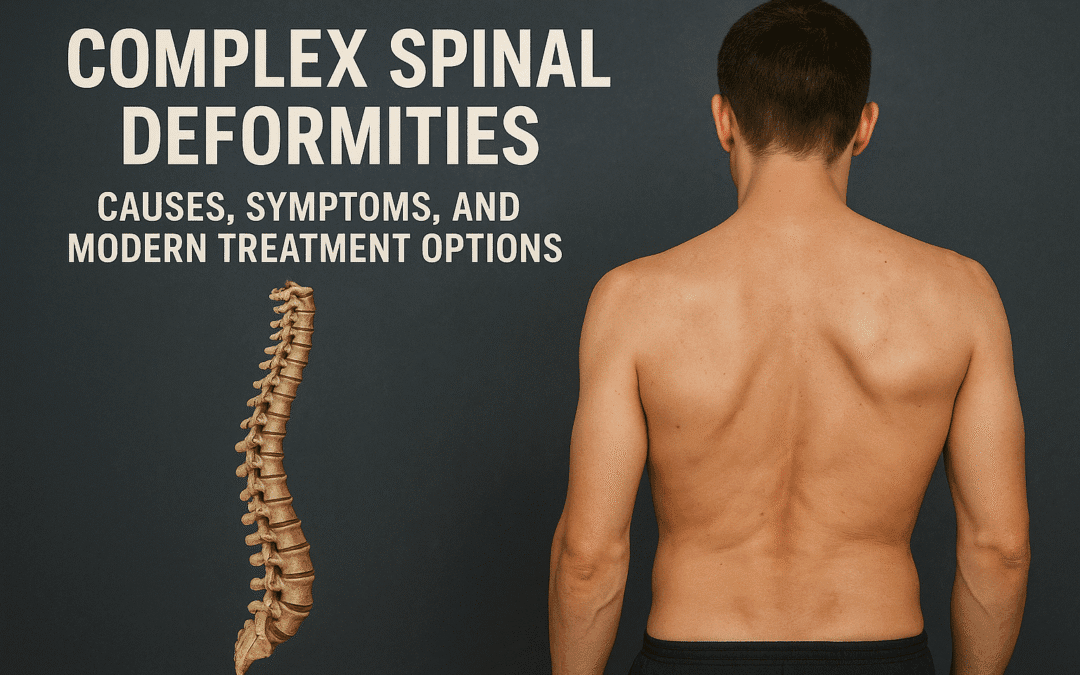Understanding Complex Spinal Deformities
Complex spinal deformities refer to severe abnormalities in the spine’s alignment, structure, or curvature that affect balance, mobility, and overall posture. These conditions often involve multiple segments of the spine and can progress rapidly without proper medical attention. Early diagnosis and specialized treatment are crucial to prevent long-term disability and chronic pain.
Common Causes of Complex Spinal Deformities
Spinal deformities can arise from several underlying conditions or external factors:
Congenital anomalies: Birth defects such as congenital scoliosis caused by abnormal vertebral formation.
Degenerative diseases: Age-related wear and tear leading to spinal imbalance or deformity.
Post-traumatic injuries: Fractures or spinal trauma resulting in misalignment.
Neuromuscular disorders: Conditions like cerebral palsy or muscular dystrophy affecting spinal stability.
Iatrogenic causes: Previous spine surgeries or infections leading to postoperative deformity.
Each of these causes affects the spinal column differently, making individualized assessment essential for successful outcomes.
Recognizing the Symptoms
Early identification of symptoms can prevent complications. Common signs include:
Visible spinal curvature or uneven shoulders
Chronic back pain and muscle fatigue
Difficulty in walking or standing upright
Numbness, tingling, or weakness in limbs
Breathing difficulties due to chest deformity
If these symptoms persist, immediate evaluation by a spine specialist is recommended to determine the severity and best course of treatment.
Modern Treatment Options
Advancements in spine surgery have revolutionized the management of complex deformities. Treatment plans are tailored to the patient’s age, spinal flexibility, and underlying cause.
1. Non-Surgical Management
Physiotherapy and bracing: Improve posture, strengthen muscles, and slow progression.
Pain management: Medications and injections to control discomfort.
2. Surgical Interventions
Spinal fusion surgery: Stabilizes and corrects abnormal curvature.
Minimally invasive spine surgery: Reduces blood loss, scarring, and recovery time.
Spinal reconstruction: Restores spinal balance using advanced fixation systems and navigation-guided techniques.
These techniques are designed to enhance spinal stability, reduce pain, and improve overall quality of life.
Recovery and Rehabilitation
Postoperative care plays a critical role in long-term success. Patients undergo physiotherapy, lifestyle modifications, and regular follow-up imaging to monitor spine alignment. Rehabilitation helps restore flexibility and functional mobility.
Conclusion
Complex spinal deformities require expert evaluation and modern surgical approaches to ensure spinal stability and pain relief. With timely treatment, patients can regain posture and confidence.
Consult our Dr. Sreenath Rao Jakinapally – Best Spine Surgeon in Hyderabad for advanced diagnosis and personalized spinal deformity correction.
Advanced spine care with cutting-edge technology offers lasting relief and improved mobility for complex spinal deformities.


Recent Comments